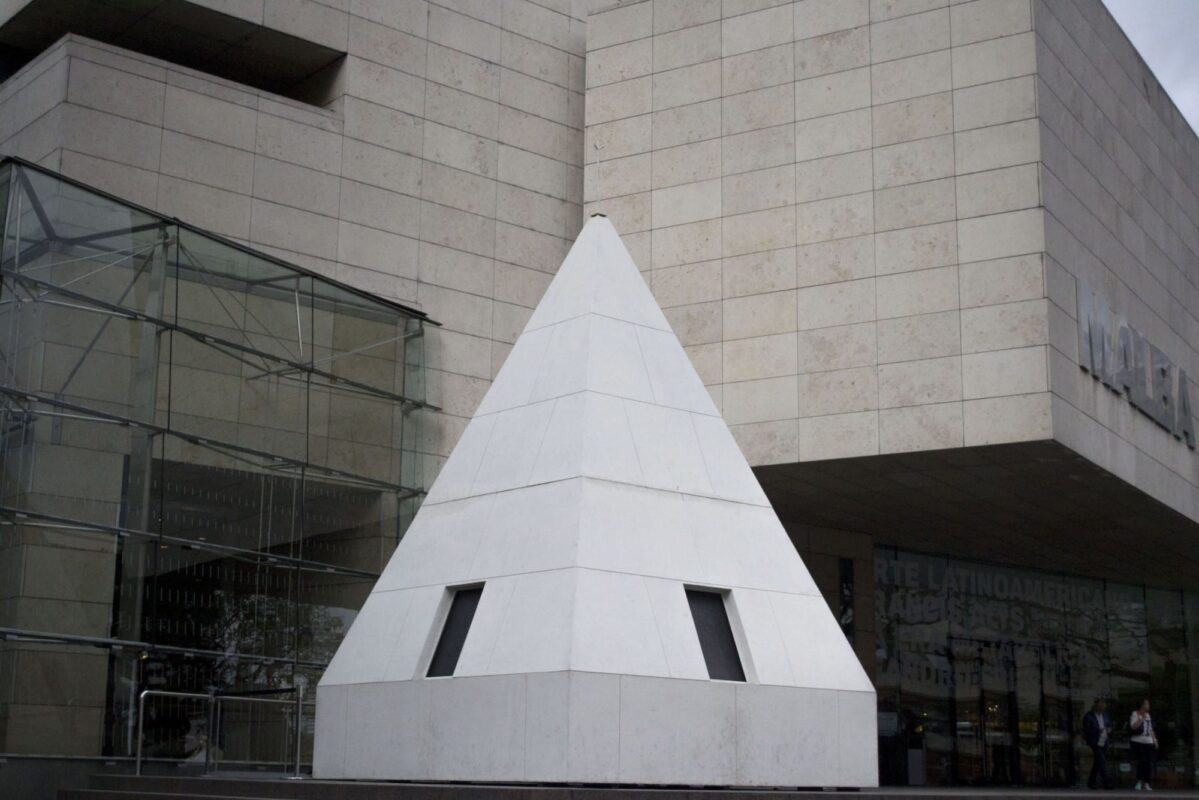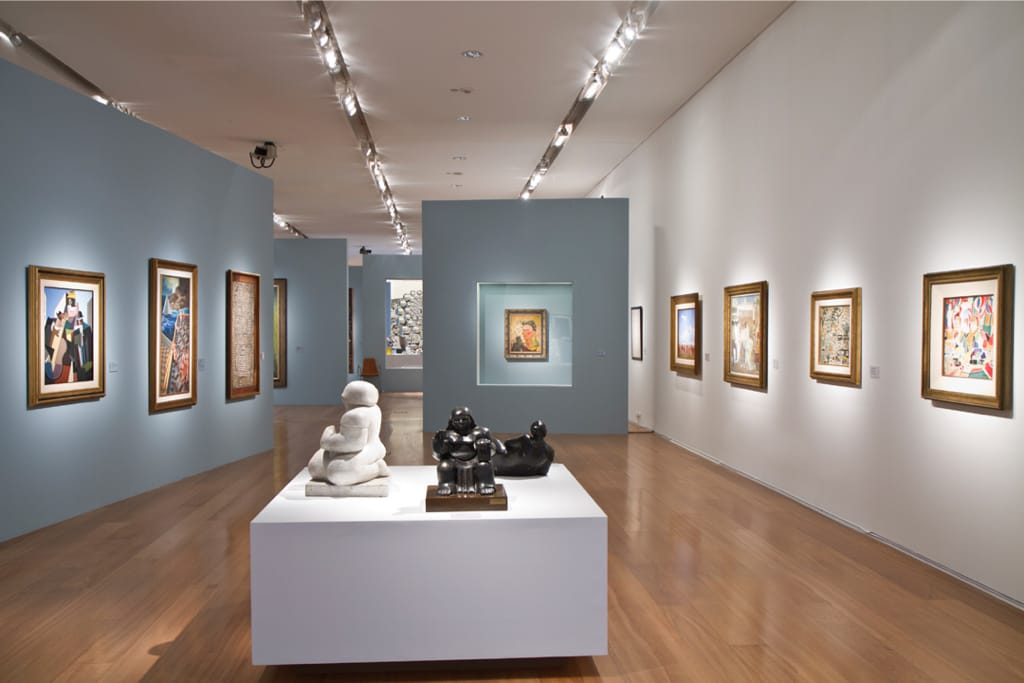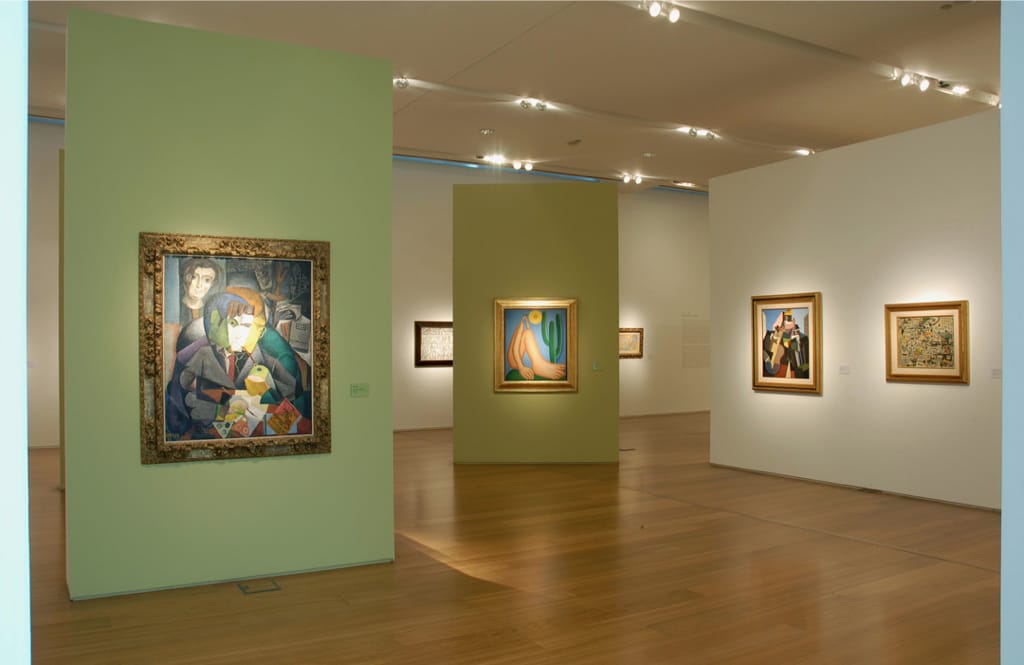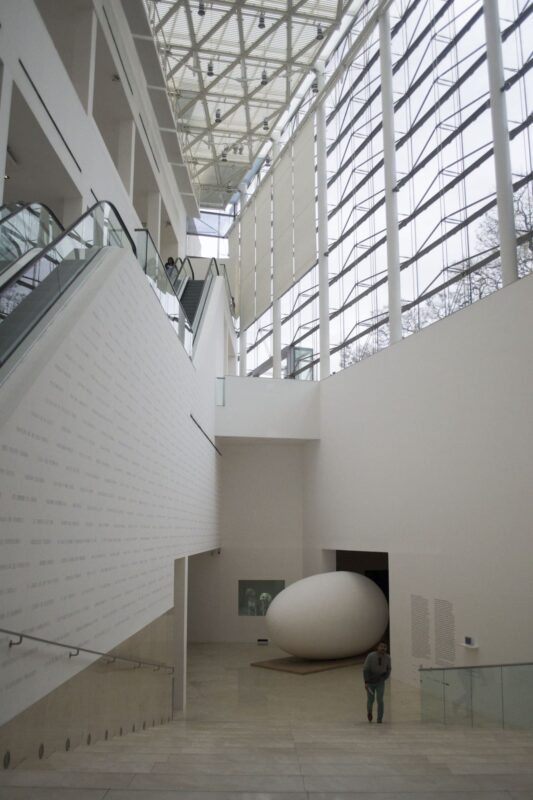Enlarge

Photo by: Carolina Bardelli
Buenos Aires is known as one of the most cosmopolitan cities in the world. Since the arrival of the immigrants in the nineteenth century, Buenos Aires has developed a unique identity which is reflected in the city. The multicultural spirit is shown in its buildings, food, music and art.
The eclectic soul of Buenos Aires can be found in the great variety of museums and galleries which show the rich culture that has been developed over centuries. One of the most complete collections of Latin American art can be found at MALBA, Museum of Latin American Art of Buenos Aires, which was opened in 2001. Run by Eduardo F. Constantini, philanthropist and art collector, the museum is located strategically in the heart of Palermo, the trendiest neighbourhood in the city, which is one of the most preferred by tourists. This said, MALBA is a must-see of Buenos Aires.
MALBA is located in Barrio Parque, an area in Palermo, which was designed by the architect Carlos Thays in 1912 and is recognised for its large parks, classical style buildings and curved streets. While walking to the museum it can be understood why Buenos Aires is acknowledged as “the Paris of South America”. However, MALBA contrasts with its environment. Located on the beautiful Alcorta Avenue, the massive and contemporary construction, designed by Gastón Atelman, Martín Fourcade and Alfredo Tapia, stands out, making the museum a required stop for visitors. It attracts everyone’s attention and it is a piece of art on its own.
Enlarge

Photo courtesy: MALBA Fundación Costantini
The design idea for the building was to integrate it with the city and create an atmosphere that favours the interaction between guests and art. From outside, MALBA captivates everyone’s attention with its modern and deconstructivist style, a movement fashionable in the 1990s. From the first moment, it invites pedestrians inside. Before entering the museum there is a massive courtyard with benches designed by Nushi Muntaabski and Cristina Schiavi, to rest on and enjoy the scenery. Additionally, some artwork is shown in the exterior: for several years MALBA was recognized as the home of “Volumen”, a giant traffic light and site-specific artwork created by Sergio Avello that measured the sound intensity of the streets. This piece is a way to raise awareness about noise pollution in the cities and it became an icon of the institution.
Once inside, the thing that stands out the most is the museum’s luminosity, which creates a welcoming and calm atmosphere. The philosophy of the museum is to have its visitors feel at home. MALBA is a lively and participative multicultural space in which the public is the protagonist. This is shown in the museum’s dynamic and open building, which allows the guests to feel comfortable to explore. MALBA is the perfect place to unwind after a long day— getting lost in its hallways while contemplating artworks, watching a movie or reading a book in its bookshop.
The main hall reveals the geometric structure of the building, which is based on the juxtaposition of volumes. The glass and limestone construction gives a clean and modern feeling that is contrasted with the varied artworks that can be found in its salons. Two escalators lead to the exhibition salons, which are distributed in two stories. The first one houses MALBA’s permanent collection-- the star of the museum.
This collection is the main attraction and is part of the Constantini Collection. With its focus on Latin American art, the exhibit has more than 600 works of art from 160 artists, including paintings, drawings, collages, videos, objects, installations, sculptures and videos from the 1920s to the 1970s. Artists such as Frida Kahlo, Antonio Berni, Tarsila do Amaral, Julio Le Parc and Marta Minujin are featured in the permanent collection, which grows each year with new acquisitions. The great variety allows the visitors to truly know the art scene during the 20th century, covering the most important artistic movements of this period across Latin America, from Argentina to Mexico. The European influence is clearly perceived mostly in 1920s art, when artists travelled to Europe and contacted the avant-garde movements of the period such as Expressionism, Cubism and Futurism. However, when Latin American artists came back to their countries, each one of them translated what they saw in different styles and topics, adapting the techniques to each country’s history and situation.
The permanent collection is organized chronologically around eight topics: Modernism and Avant-Garde, Modern Photography from the 1930s, Surrealism, Op and Kinetic Art, Destructive Art, Pop Art, Minimalism and Conceptual Art and, lastly, Hyperrealism. These eight themes aim to encourage its visitors to know and understand the diverse and rich artistic patrimony of the region. The artworks transmit the feelings that configure Latin America’s identity through history: suffering, anger, joy, religion and politics are present in every brush stroke. Some of the highlights of the collection are: “Manifestación” (Demonstration) (1934) by Antonio Berni, Frida Kahlo’s Self portrait with Monkey and Parrot (1942), “Abaporú” (1928) by Tarsila do Amaral, “El viudo” (The widow) (1932) by Fernando Botero and “Six cercles en contorsion” (1967) by Julio le Parc, among many other masterpieces.
Enlarge

Photo courtesy: MALBA Fundación Costantini
MALBA’s mission is to educate its visitors and to create interest in Latin American artists, recognizing the cultural and artistic diversity of the region. In addition, the museum looks forward to promote the exchange of artworks amongst international and national institutions so as to create a wide art community for anyone. With guided tours for different ages, MALBA is prepared to receive anyone from children to art students to professionals who are interested in knowing more about the magnificent art of the continent. The museum organizes a wide variety of educational programs suited for all ages and interests, so everyone can experience the museum at its best.
Aside from the permanent display, MALBA also holds temporary exhibitions that feature artists such as Andy Warhol, Yayoi Kusama, Mario Testino and Robert Matthelthrope. Every year, thousands of visitors from Argentina and around the world queue outside the museum to enjoy the world’s best international artists. Yayoi Kusama’s exhibition, Infinite Obsession, broke a record with more than 200,000 visitors.
In addition, the museum has a cinema, which is one of the few venues in the city that offers independent features. One of the must-see films is Metrópolis (1927), a German expressionist science-fiction drama film directed by Fritz Lang. This movie was the most expensive movie in German cinema and one of the most influential ones of the time. Unluckily, after its release the movie was cut and large portions of the film were missing, until the finding of the Argentinian version in 2008, the most complete one that is known to day. After this discovery, the Murnau foundation started its reconstruction and in 2010 the new version was premiered in Berlin. Nowadays, this masterpiece can be enjoyed weekly at MALBA, along with other movies by various rising and acclaimed directors. Every month a series of screenings is organized and shows on average fifty films a month. MALBA’s cinema is also one of the venues of BAFICI film festival, one of the most important festivals for independent movies. The museum also holds lectures and seminars about art, literature, music and cinema.
Enlarge

Photo by: Carolina Bardelli
After finishing visiting the exhibitions, the museum’s store is a mandatory stop. Located on the ground floor, Tiendamalba has one of the best bookshops of art and design across town. There the catalogs of current and past exhibitions can be found amid other art publications. Furthermore, the store’s museum has the mission of disseminating Latin American designers, and has a great selection of contemporary jewellery, clothes, notebooks, bags, souvenirs and CDs from local designers and musicians, This is the perfect spot to visit after looking round the museum and a chance to know established and emerging talents.
After visiting the exhibitions, the museum’s terrace is the perfect spot to relax and unwind. The wooden benches and flooring generate a warm environment, ideal to have a snack while staring at the leafy trees. The museum’s cafe is also perfect after a long visit to sit and enjoy some traditional coffee with medialunas.
Latin American artists have constructed a unique identity which reflects the past and the present of the region. MALBA plays the part of being a bridge between the artwork and the public-- a platform to connect Latin America to the world. The wide variety of the pieces exhibited show the diversity of the regional cultural scene and it has something for every taste so everyone can leave with something to reflect on later. This said, MALBA is an essential visit while visiting Buenos Aires.
